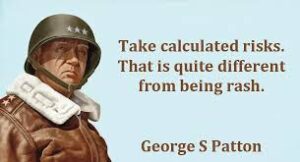At Malse Lake
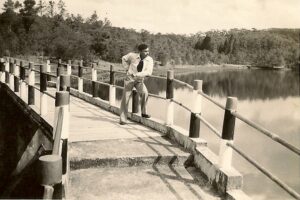
1980 (Plt Offr)
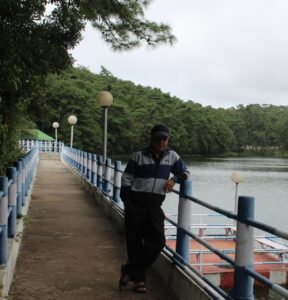
2017 (Air Mshl)
Picturesque, serene, tranquil, calm, soothing, scenic and beautiful, are some of the words that come to mind, whenever, Malse Lake is mentioned. For me, it is a dream that came true. I saw Malse Lake and cottage for the first time in 1980 as a pilot officer, almost at the beginning of my service career in the Air Force. The experience was like visiting a dream world. The dream came true, three and half decades later in 2017, on getting posted to Shillong as AOC-in-C, EAC. Our initial stay was at Malse cottage till Lakreka (official residence of AOC-in-C) got ready.
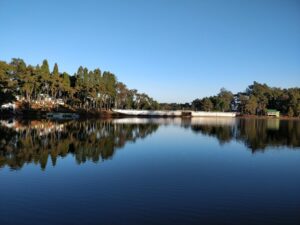
Malse is a man-made lake (named after its creator), created with the purpose of storing and supplying water to Eastern Air Command camp at upper Shillong. Seeing the scenic beauty of the place the cottage was added to the site. Over the years the place has improved and become better, with addition of Diwan cottage, boating facilities, floating decks, jogging track, and picnic spot. Formation swimming display by gaggle of geese and raft of ducks adds to the beauty of the place.
Well this story goes back in time, to the year of the lord 1980. We, the young pilot officers of 124 pilots course (22 of us) were posted at OCU (Operational Conversion Unit at Kalaikunda air base – near Kolkota), undergoing flying training on Hunter aircraft. Hunter aircraft was considered to be an officer like aircraft (Definitely felt so after flying the dalda tin HT-2 and Kiran ac). It was very light on controls and had to be handled very gently. After flying hunter aircraft one got convinced that reference to aircraft as feminine was justified (Mig-21 aircraft shattered that belief). However, the hunters were quite old and almost on their last leg (The “almost phase” stretched for another 15 years till 1996). The aircraft had seen numerous modifications and every aircraft had a slightly different cockpit layout. One had to go five to ten minutes early to familiarise oneself prior to each sortie.
Coming back to OCU training, the number of serviceable aircraft was low and entire course couldn’t have flown at the same time. We were divided into batches to undergo flying training. At any time more than half of us were sitting idle, either after finishing flying or yet to start flying. Keeping so many young pilot officers unemployed was asking for trouble (Devil’s workshop). War studies and presentations (Iran – Iraq war was in progress) were not enough to prevent the young lot from creating trouble. Extra duties and temporary duties were liberally awarded for damage control. HQ EAC came up with a brilliant idea of attaching young pilot officers to command headquarters for duties. Otherwise, a pilot officer in a command headquarters was neither seen nor heard off.
Three of us (Hari Kumar, Anshu Matta and I) were sent to Shillong for a month as we had finished flying. Three of us landed up in Shillong without a clue about command HQ and our task. The HQ EAC was located in a British era building and it had wooden floors and active fireplaces in every room. Well everyone was intrigued to see pilot officers at such a high formation HQ in the organisational structure. Shillong at that time was a quaint little town confined to a small valley. It had buildings made of wood with green coloured tin roofs. One could explore the entire town walking, within few hours.
The one month at Command HQ turned out to be quite a fun time. We were given 24 hour ops room duty in rotation. It meant one day duty and two days off, with two of us free at any point of time, to explore the area or indulge in recreational activities. The billiards table in the Officer’s mess was in a very good condition and rum with coke was the favourite drink. The country folks were very friendly and open to visitors. In the evening one could walk in any direction and within a reasonable distance find a friendly village. Each village had a bonfire lit up in the village square with folks drinking, eating, playing guitar and singing.
Malse Cottage
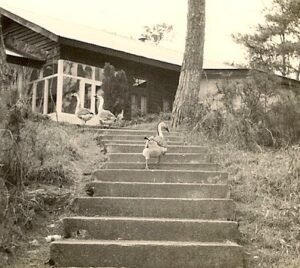
1980
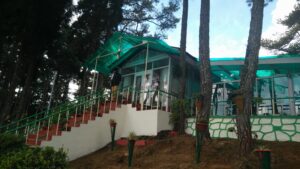
2017
One of these evening walks we (Hari Kumar and I) found this magical place called Malse Lake and cottage. It really looked like fairy tale setting. The cottage was locked of course and we could just peep inside through the glass window. That is the time the thought did cross the mind that one day maybe we could come and stay here. Diwan cottage did not exist at that time and the area around was not that well developed. The lake had square shaped barge anchored near the cottage. The barge had a bench on it with a canopy for cover. The propulsion system consisted of foot pedals with chain mechanism, and a rudder connected to a lever for steering. The temptation to explore the lake on the barge was irresistible however, the barge was chained and locked.
While we were figuring out how to fulfil our desire, a DSC guard appeared from somewhere and challenged us. It was very apparent that he was not pleased about our presence there. Even our introduction as the MIGHTY pilot officers of the Indian Air Force did not seem to impress him. On asking about the key to the lock, he expressed ignorance about the whereabouts of it. Somehow the message was clear, “even if I have it, I am not giving it to you” and “leave as soon as possible”. With the appropriately conveying body language he left.
Well young and dynamic pilot officers of the IAF were meant to fight bloody air battles with the enemy in order to defend the motherland. Certainly a “Made in Aligarh” lock would not dissuade us from achieving our objective. As far as the guard is concerned, it seems he had just come for a routine security round of the area (There was no permanent guard post at the site). Once the guard had left and was out of sight, work started on removal of obstacle to the mission ahead. The lock and the chain did not stand a chance against our highly motivated onslaught. The barge was freed and launched, propelled and steered towards the centre of the lake. The view and the ambience was beautiful, augmented by the colours in the sky of setting sun. Whole experience reassured us that the coming years in the Air Force were going to be full of fun.
As the sun went down, we could feel the sudden drop in temperature. The jacket was zipped up and return towards the cottage was initiated. That is when the pedals went free. No problem, as emergency handling is part of flying training. You quickly analyse the situation and take immediate actions followed by subsequent actions. The situation was analysed quickly and it was concluded that the chain must have come off the sprocket, as often does on a bicycle. A hatched panel was located on the barge floor just near the pedals. Simple, we open the hatch, put the chain back on the sprocket and return back to be in time for the rum and coke in the fire heated billiards room. The panel was opened and alas there was no chain. It had broken and was lying somewhere at the bottom of the lake. The situation was reassessed, there was no propulsion system left, there were no oars and all we had was a few feet of rope. With the sun having gone down the temperature was dropping faster than our confidence and moral. In other words the situation was hopeless.
The air force training didn’t work so we had to fall back on NDA training. Now we realised why in NDA one is made to yell his (now her as well) guts out in the drill square even when the recipients of the command are standing next to you. We started screaming for help at top of our voice, hoping someone will listen and come to our rescue. Even the non-cooperative guard would have been welcome in this situation. After some time we realised that even the Plan B (Plan A having failed earlier) is not working. It was time for the Plan C. One of the choice was to wait for the next guard check or someone noticing us. That could happen the next day and in the night with temperature touching almost zero, they would have to thaw us out the next day. Life in air force didn’t look as rosy as it felt earlier.
Out of desperation (more out of survival instinct) we decided to start paddling with our hands. Imagine moving that huge raft (surely felt HUGE) with hands as paddles. The water was freezing and the hands couldn’t be kept in the water for long. We started crawling towards the lake edge. Can’t remember how long the ordeal lasted. The progress was very slow and steering the barge accurately was out of question. It headed in the general direction of the cottage but landed up far from it. Now came the second decision time. Leave the barge and wade through the knee deep water towards the lake edge or somehow take it to its original place. The flying discipline kicked in once again – Always bring your aircraft back.
The question was how? It was decided that one of us would get down and wade through water. We will use the rope to pull the barge towards its original position. The other person will stay on the barge and try and steer it somehow (maybe a stick from the shore) and prevent it from getting stuck. Stronger and taller Hari Kumar was the obvious choice for getting off into the knee deep water. This is where the story differs and according to Hari Kumar he was tricked into getting off and as per me he volunteered. We have tried to resolve this difference of opinion many times over a drink (not only with rum and and coke but tried whisky, beer and other liquors as well) but in vain. I am, sure it will get resolved one day with appropriate type and quantity of liquor.
Much more effort and grief followed. Any way like good soldiers, we accomplished the mission successfully with the barge tied to its original position (secured as the naval course mates would say) minus the securing lock and propelling chain. The culmination deserved a Tarzan like war cry but we were too wet and frozen for it by then. Thanks to NDA training once again, we were still able to make it in time for that rum and coke in the heated billiards room (after a quick hot water bath). Both of us didn’t know that one day we will land up as AOC-in-C in the same command HQ (2015 and 2017).
The barge is not there anymore. Saw some pictures of it in the album. Someone had made a small hut like structure on it. Further inquiry revealed vague answers that the barge capsized and sank some time back and is lying somewhere on the bottom of the lake (not verified).
Everyone does contribute to improve things. During the period 2017 – 18 the much required dredging of the Malse Lake was carried out. Further the staff officer’s cottage was renovated to a good standard for families and guests to stay, when the main cottage is unoccupied. Process of changing over from motored boats and water scooters to rowing boats and kayaks was initiated to avoid oil pollution in the lake (Hope this endeavour is carried forward).
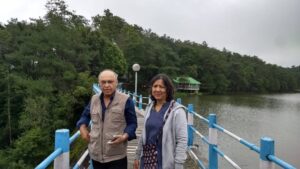
Post retirement have visited and stayed at Malse lake (Malse and Diwan Cottage) twice and would love to visit again sometime.
Comments are most welcome
Link to previous stories
My Tryst with HT-2 Aircraft: The Day God Flew With Me
THE DAY I FLEW MY DAD’S CAR
For regular updates, please register here
Subscribe
